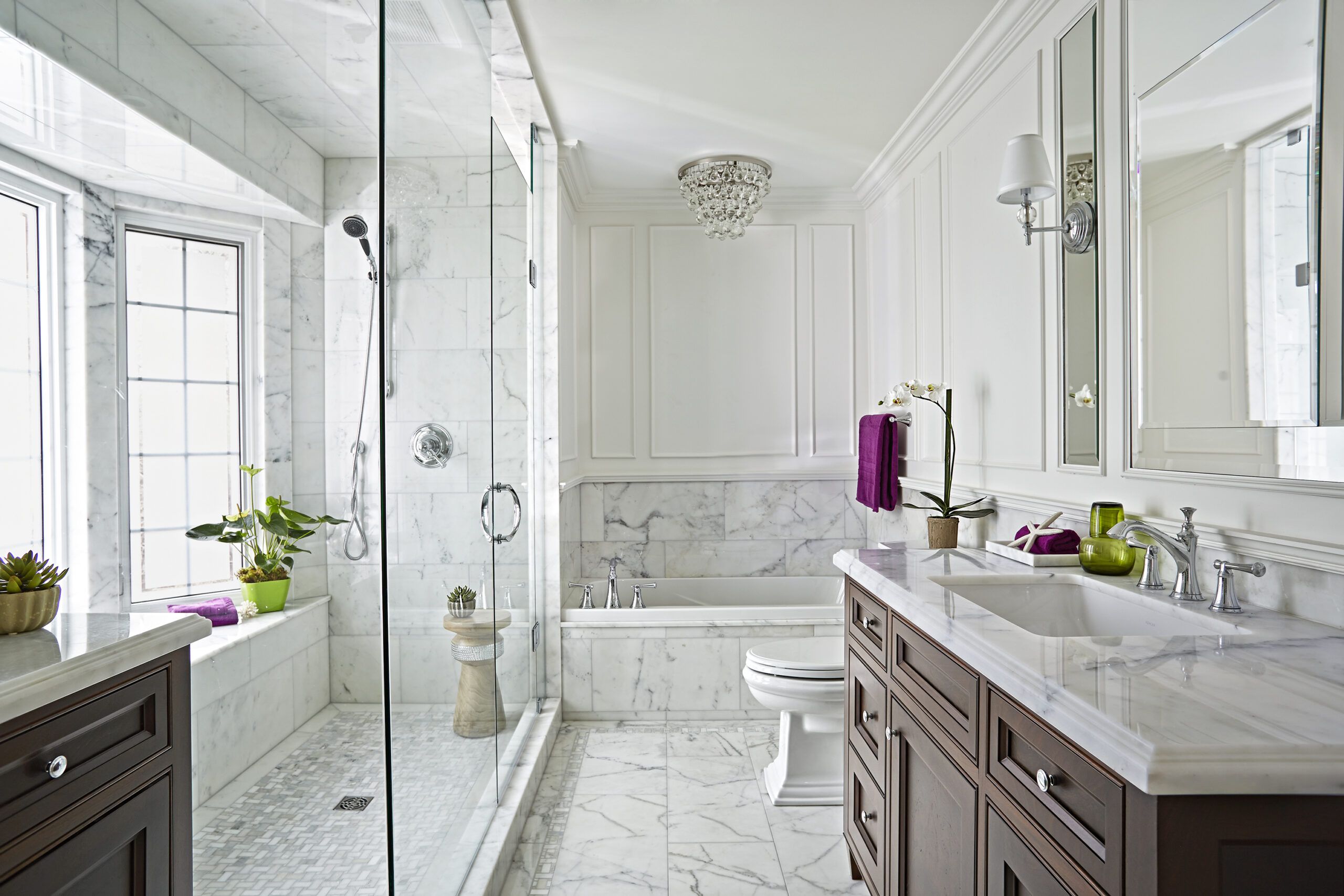Second only to kitchens, bathrooms have long been a popular room for homeowners to remodel. Redoing a bathroom allows you to make it more functional, put your own stamp on the design, and add a little luxury while you’re at it.
To get started, you’ll need to get your budget in order. If you’re happy with the current layout of your bathroom and all it needs for a refresh is a coat of paint, new plumbing, light fixtures, and modern hardware, you can expect to pay under $5,000. At the other extreme, a major down-to-the-studs renovation might run you $30,000 to $40,000. Whether you’re planning a modest bathroom makeover or a major gut and remodel, our expert tips—beginning with the simplest fixes and leading up to a complete overhaul—will help you get it done right.
Expert Bathroom Remodeling Tips
Before you jump in and start knocking down walls, take these pro tips into consideration.
Choose the Right Paint Sheen
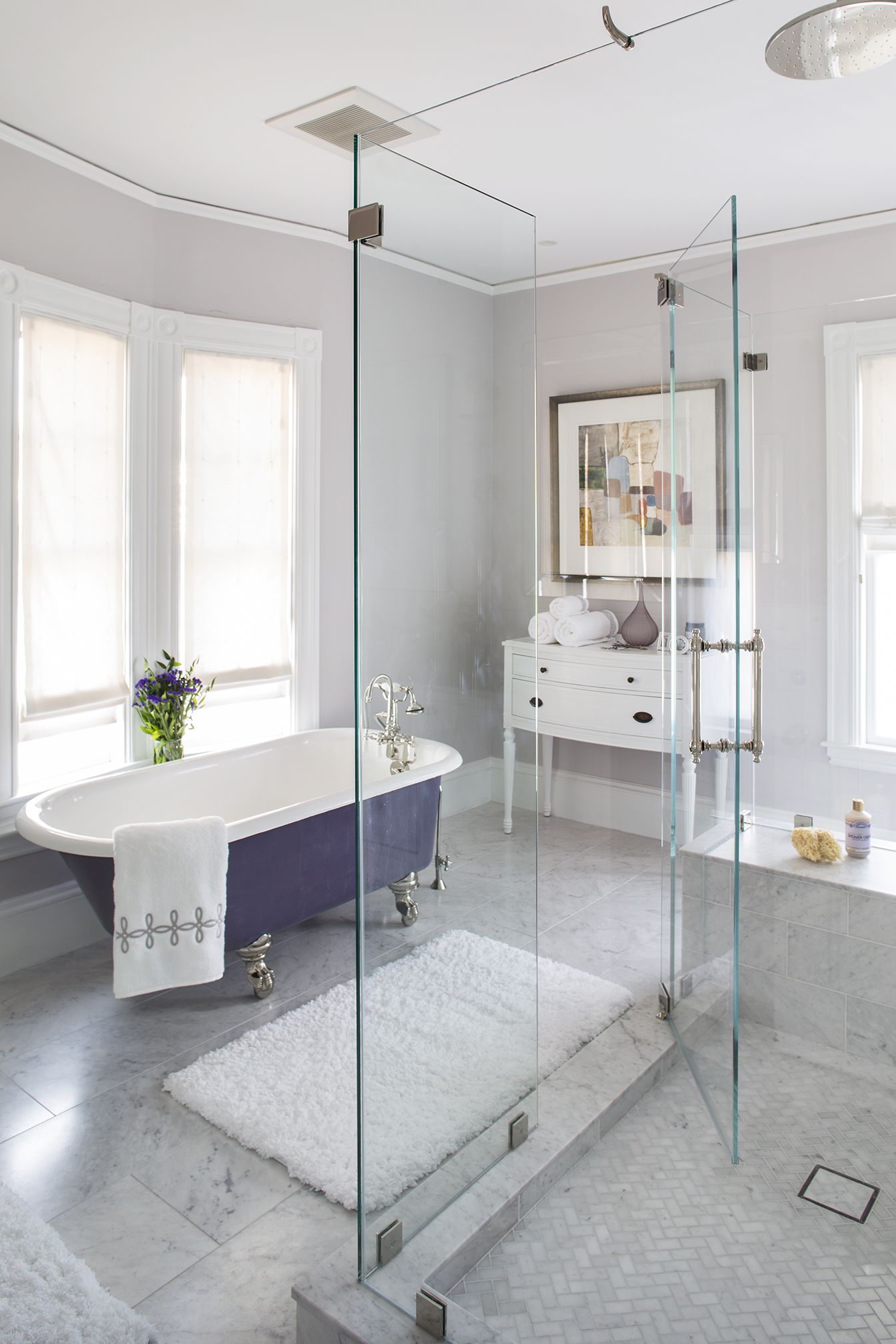
In years past, you had to use a glossy or satin paint wall finish to lock out persistent bathroom humidity. But today, many manufacturers are producing specialty paints in on-trend matte finishes that are formulated with anti-microbial additives to protect against moisture and mildew. These paints may cost up to two times more than standard latex-acrylic. So if you want to save money, go for glossy or semi-gloss latex paint. Whatever you choose, start with a mildew-resistant primer.
The best way to prevent mold and mildew is to stop it before it starts with a properly vented exhaust fan ducted to the exterior. If the walls already have mold or mildew, don’t just paint over it—clean it away first. The U.S. EPA recommends scrubbing walls with a mixture of detergent and water to remove mold. If you want to use bleach, always dilute it heavily in water and work in a well-ventilated space. Allow walls to fully dry between cleaning and painting. Don’t use the shower for at least 24 hours before or after painting to ensure that no moisture disrupts the paint-curing process.
Select the Faucet First
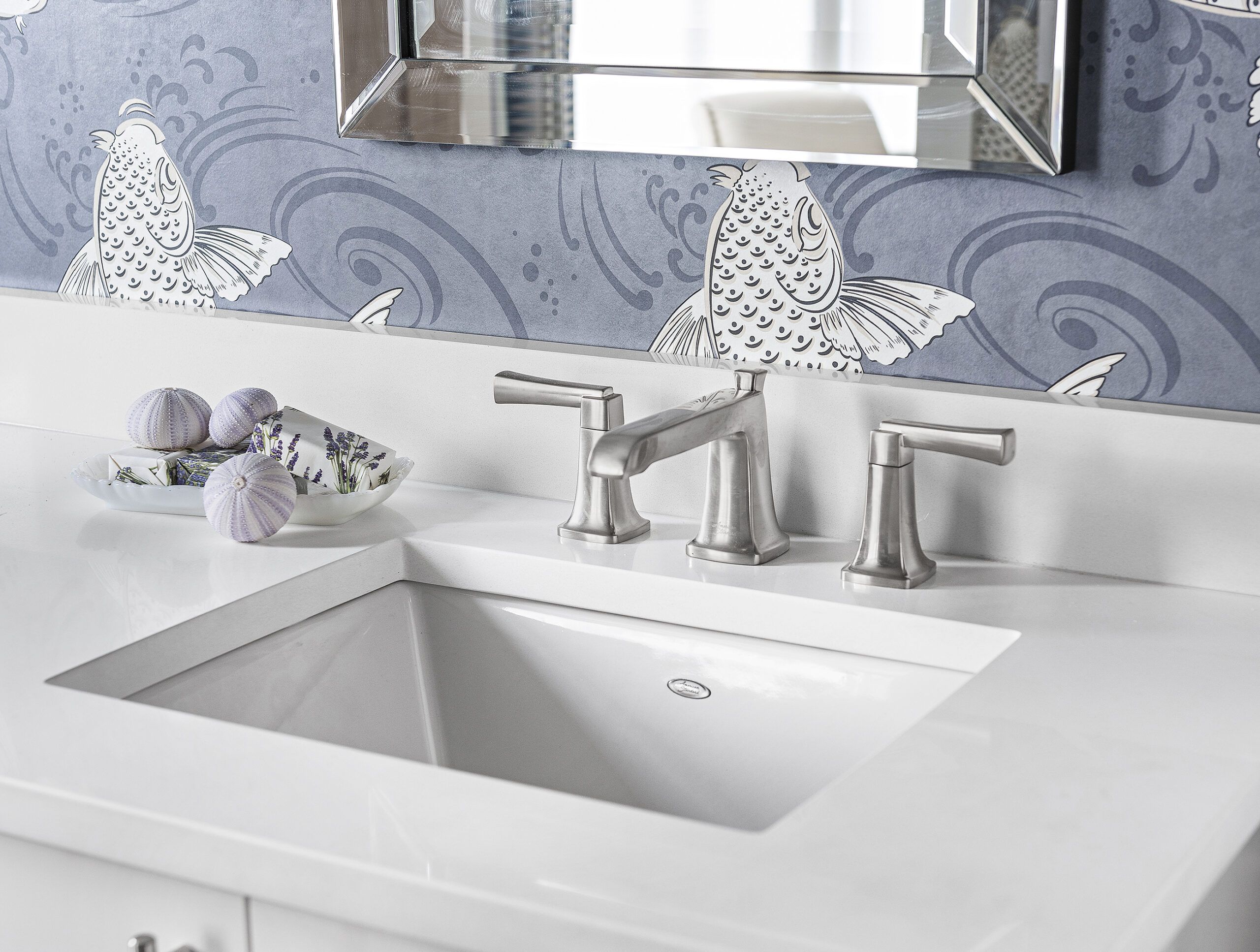
The sink faucet—or in some cases the tub faucet—is the most visible hardware in many bathrooms, so start by choosing it. Take into account the sink mount, the finish, the style, and the flow rate. Once you’ve made your decision, you can match the shower set, toilet flush lever, towel bars, and other hardware to the faucet’s styling and finish material.
Trends for styles and finishes come and go, but some aspects of faucets are timeless. Ergonomic lever faucets are the easiest to use for people of all ages—and you can find them in styles from modern to vintage. Additionally, faucets marked with the WaterSense label meet U.S. Environmental Protection Agency (EPA) standards for both water efficiency and flow, and they can save the average family about 700 gallons per year and nearly 11,000 gallons over the faucet’s lifetime.
Think about Your Storage and Counter Needs
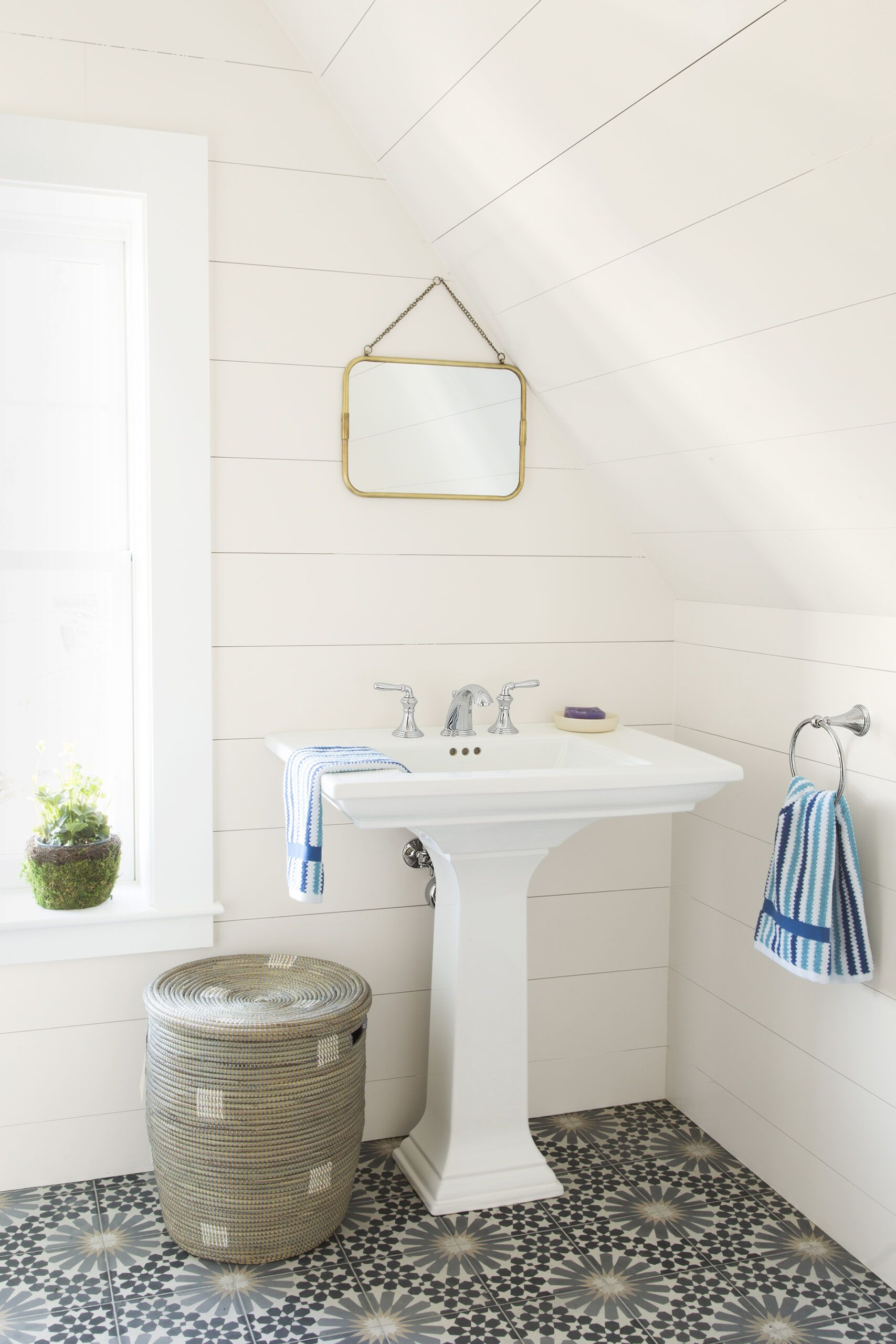
Your choice of sink and vanity will determine how much storage and counter space your bathroom provides. A pedestal sink offers a slim and traditional silhouette that’s ideal for small bathrooms, but it has no vanity for storage and very limited counter surface. A vessel sink is a bowl that sits on top of the vanity—often a repurposed piece of antique furniture—so there’s plenty of room for drawers and storage space inside, but little usable counter space on top. A traditional vanity offers both counter space on top and storage space below.
Make Flawless Flushing a Priority
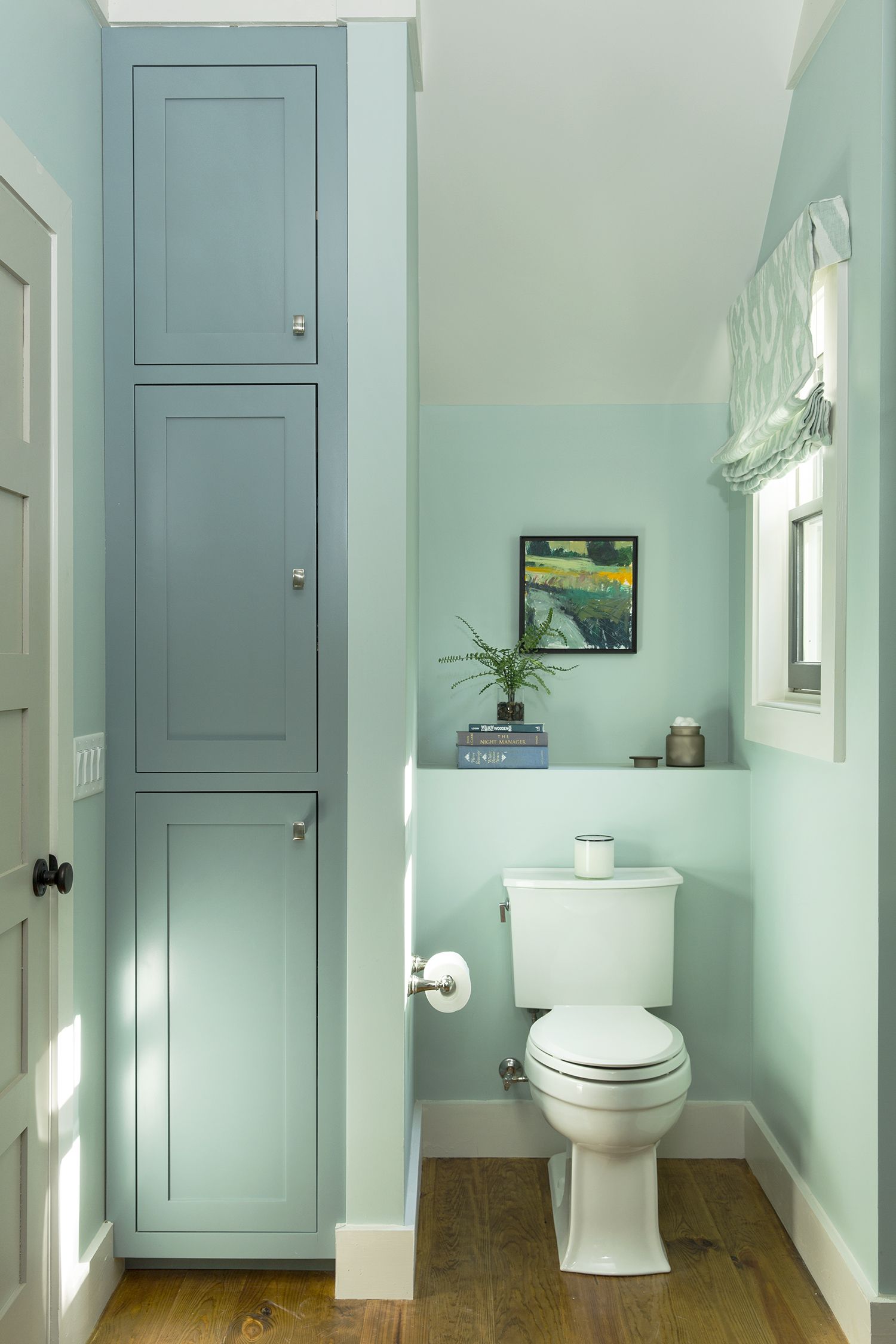
If you haven’t shopped for a toilet in recent years, you’re in for a surprise. Heated and LED-lit seats, built-in bidet functionality, and water-saving and self-cleaning features are just a few of the high-tech options you’ll need to evaluate. But flawless flushing should be your first priority. Go to map-testing.com to check any toilet’s ability to get the job done with just one push of the handle. Look for toilets with a Maximum Performance (MaP) testing score of 500 or higher. This group includes many WaterSense-rated toilets, which are high-efficiency models that use as little as half of the 1.6 gallon-per-flush legal limit.
Flatter Yourself With the Right Light

While recessed or surface-mounted ceiling lights are critical for overall room lighting, they’re unflattering for self-reflection. Task lighting—that is, lighting for a specific purpose, as opposed to ambient lighting—on either side of your over-sink mirror is ideal. Fixtures should be placed at eye level (around 66 inches) and ideally spaced 36 to 40 inches apart. If there’s no room for side sconces, install a long fixture on the wall above the mirror. Bathroom vanity lights should be at least 150 watts and spaced evenly to provide consistent illumination for the person using the mirror.
Pick Porcelain
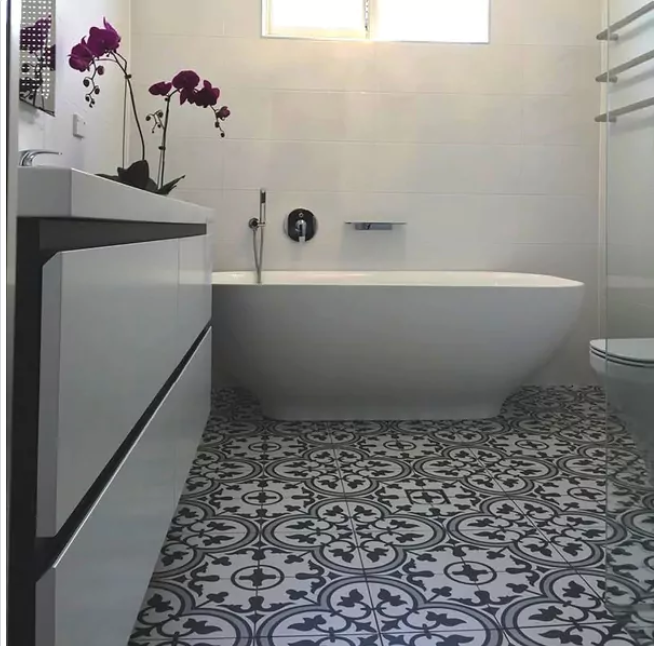
Bathroom flooring is one of the most important choices you’ll make, since it makes up such a large portion of the visual space as well as the budget. Cement and encaustic tiles are popular options, but they can be pricey, they’re harder and more expensive to install, they’re prone to etching by acids and harsh detergents, and they require annual sealing. For high quality, affordable, and easy-to-care-for surfaces, the gold standard is porcelain. The toughest versions are practically crack- and stain-proof, and you can find tiles that convincingly mimic the look of handmade ceramic, natural stone, and even wood floors.
Go for Non-Slick Surfaces
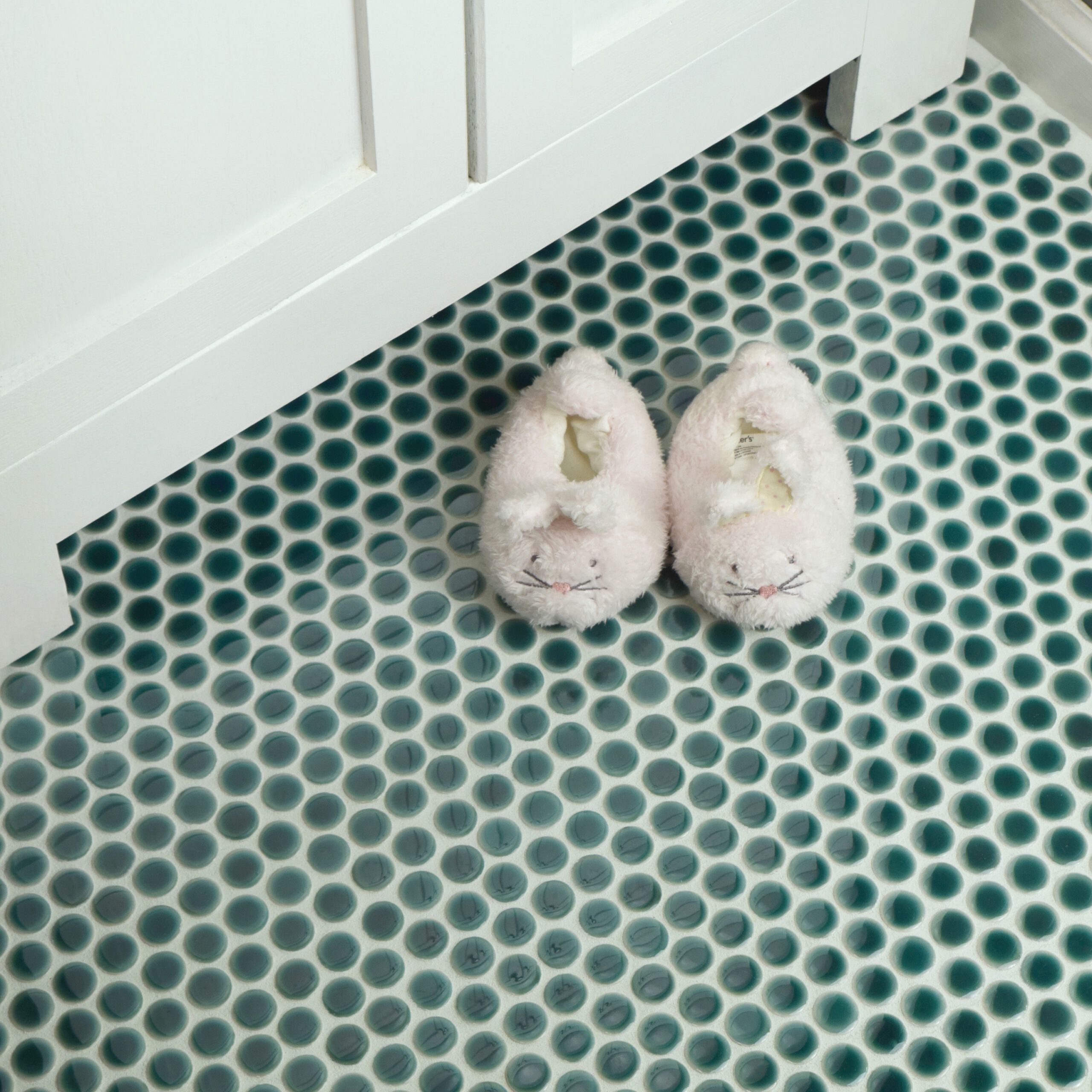
Though porcelain is extremely durable, many porcelain tiles create a serious slipping hazard when they get wet. To ensure your bathroom floor doesn’t get dangerously slick for people stepping out of the tub or shower, choose tiles with textured surfaces, matte finishes, or sand-containing glazes. Save the shiny polished tiles for the tub and shower surrounds. Another option is small tiles with lots of grout lines can add traction to the floor. Of course, you can always add removable, washable floor mats, but a non-slip floor creates a safer, more accessible environment for everyone.
Pay Attention to What Goes Behind the Walls
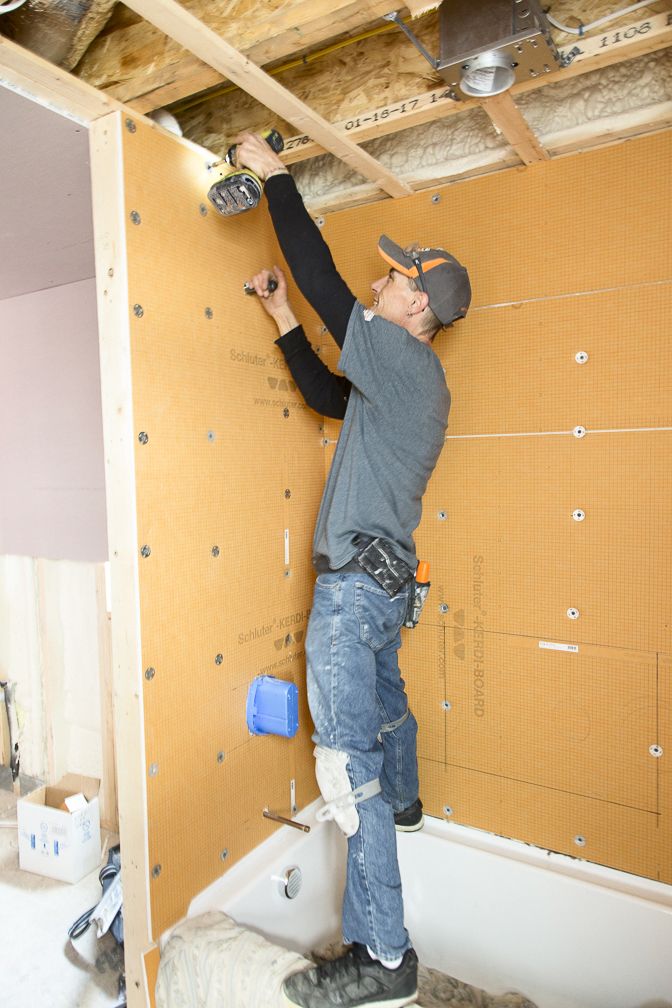
In a bathroom, consider insulating more than just the exterior wall. Insulating interior walls with stone wool will minimize the transfer of sounds such as the toilet flushing—or you singing show tunes in the shower. For full bathrooms, you’ll also want to ask your contractor for a special moisture-resistant drywall to avoid mold and mildew problems. Install cement backer board in showers or extruded polystyrene foam boards wherever you’ll be tiling to ensure a tough, durable bond for the tiles.
Upgrade Your Electrical
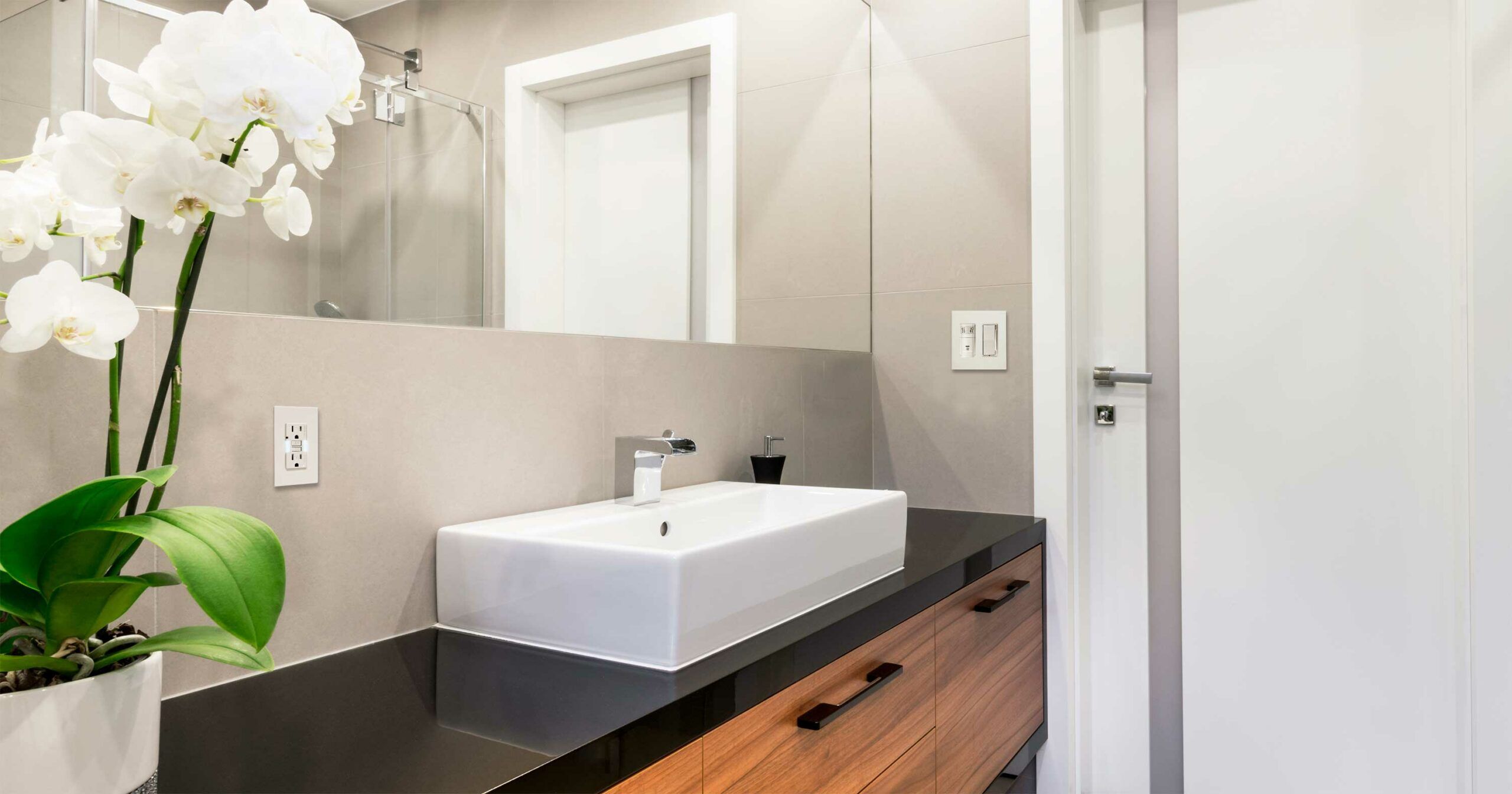
The existing electrical circuits feeding your bathroom are almost certainly fed by 15-amp wiring, which are thin wires with comparatively low power capacity. And they have likely been abused by years of humidity—and hair drying. So in addition to installing code-mandated ground-fault circuit interrupter (GFCI) outlets, you’ll want to replace the wiring with a dedicated 20-amp circuit and plenty of outlets for all the appliances in today’s bathrooms, from electric razors and toothbrushes to hair-straightening irons. Just like plumbing, though, you’ll get the most bang for your buck by installing new outlets and fixtures in the same places as the old ones.
Control Air Temperature and Humidity
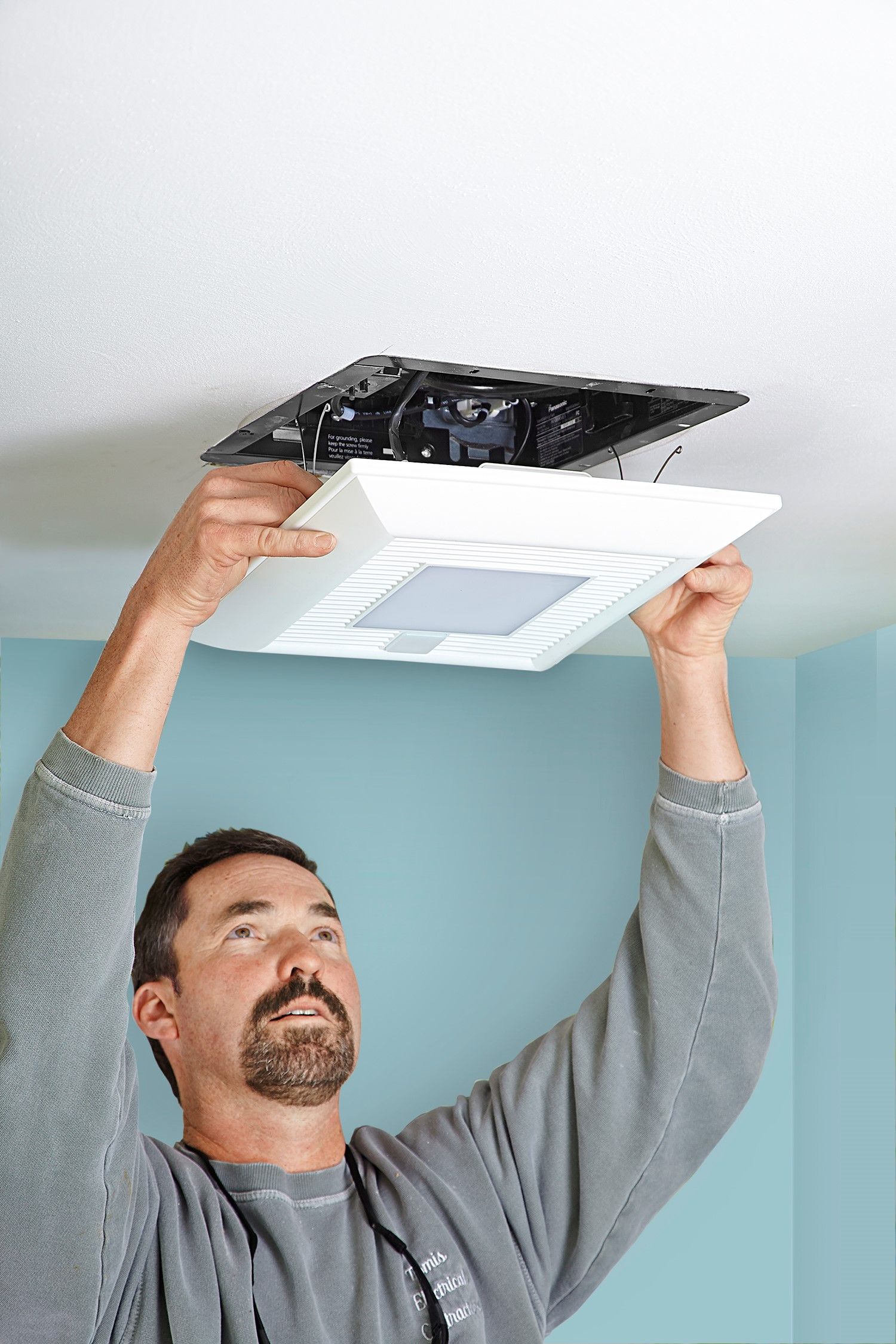
If you have forced-air heating and cooling, make sure to include a vent in the bathroom—where temperatures can otherwise swing hot and cold. For hot-water heat, consider radiant floor heat or a kick heater under the vanity cabinet—this is a small blower unit that converts the warmth from your hot-water-heating system into warmed air for the bathroom.
An exhaust fan is also a must. For a master bath, splurge on an ultra-quiet unit and put it on a timer set to run for 20 minutes after a shower. For a family or guest bath, choose a model with mid-range noise level and power, and consider a humidity sensor so that you don’t have to rely on kids or guests to turn it on. For a powder room, install a loud fan for maximum sound privacy near public areas.
Separate the Shower and the Tub
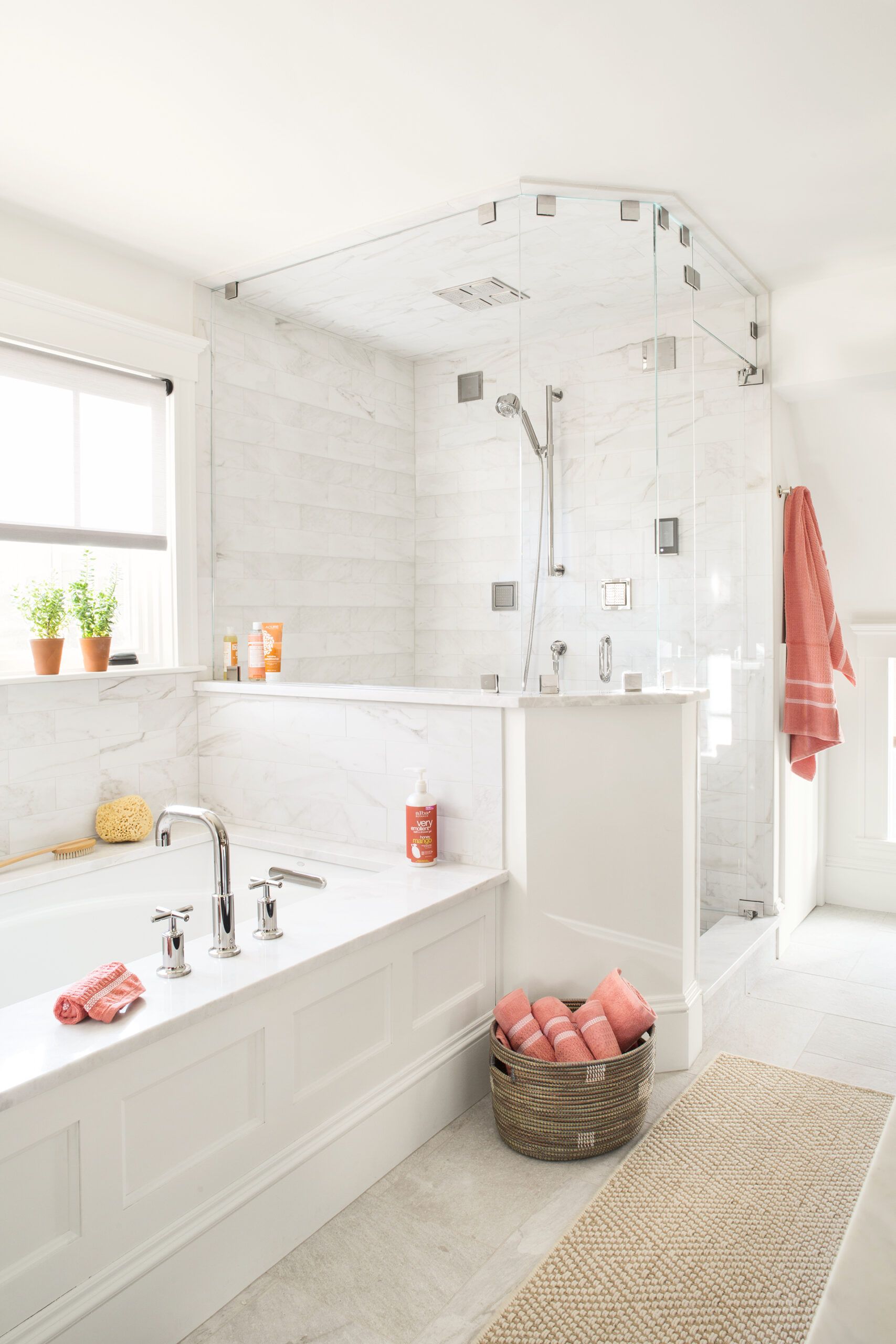
If you have the room, consider separating the tub and shower. A freestanding, deep soaking tub is the ultimate luxury, and a separate shower offers more space and easier accessibility. If you don’t use the tub very often and there’s at least one other bathtub in the house, consider replacing the tub entirely with a walk-in shower, which eliminates the danger of tripping over the tub threshold.
Such universal access measures are on the rise. Today, homes with curbless walk-in showers, where the bathroom floor continues straight into the shower without anything to step over, sell for 4.6% more and 38 days faster than similar homes without them, according to Zillow. If possible, make your walk-in shower at least 4 by 4 feet, which will leave ample room for maneuvering, and you’ll have enough space to add a freestanding bench. And consider handheld showerheads, which make it easier to clean yourself and your shower.
Starting From Scratch
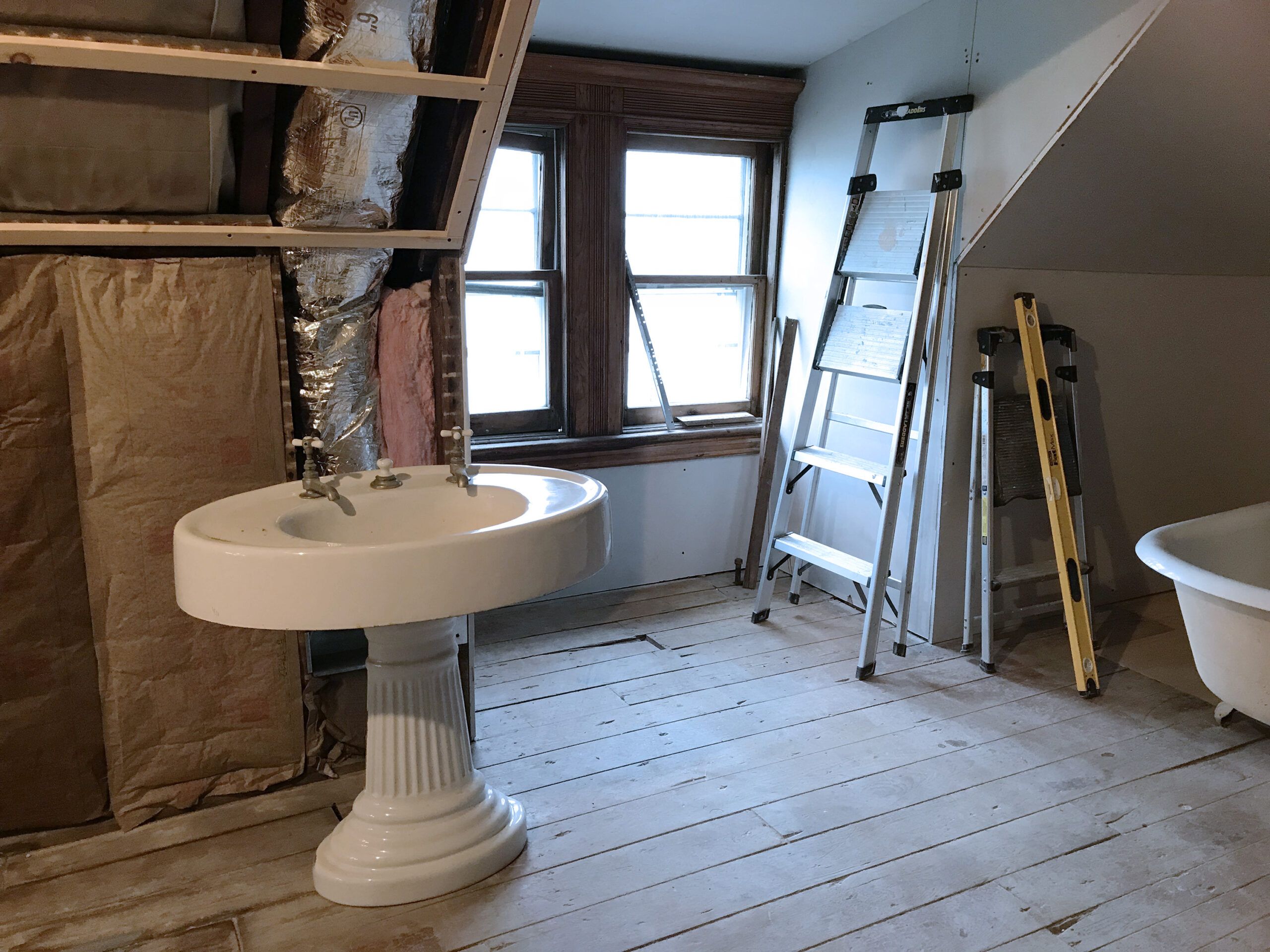
In many bathrooms—especially those built before World War II—the tile and tub are set in a thick bed of concrete. The only way to remove them and start over is to do a full “gut” demolition, which means tearing out everything down to the framing. That rules out a low-cost, cosmetic bathroom remodel—unless you install new tile over the old and refinish the tub by reglazing it (spraying on a new finish) or installing a custom-made fiberglass shell over it. Those are low-cost solutions, but not long-lasting ones, and they don’t allow you to fix problem plumbing or to reconfigure, expand, or truly transform the space.
Money-Saving Strategies
There are a few things you can do to keep costs down while achieving the bathroom of your dreams.
Keep the Door, Replace the Window
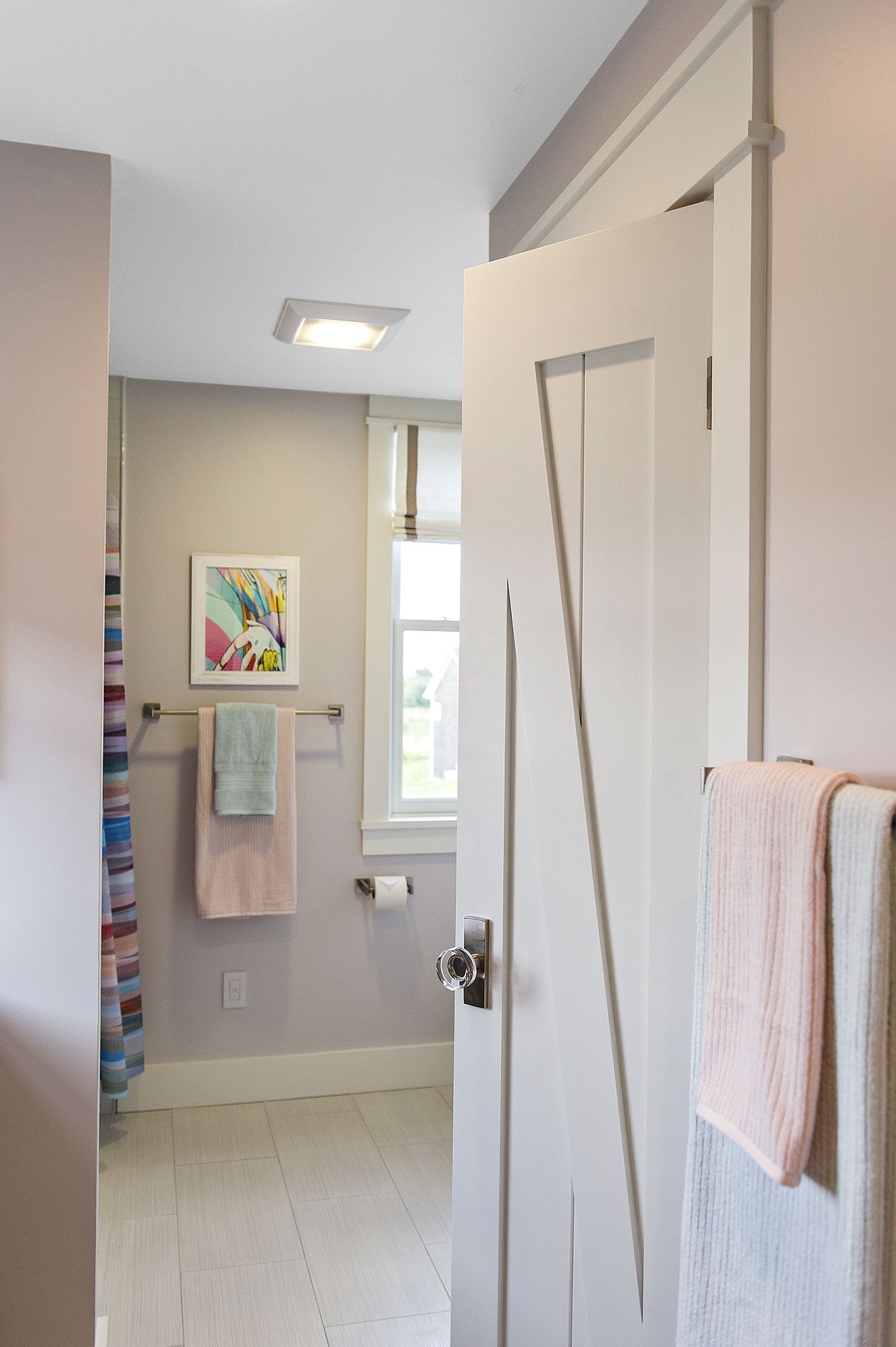
If your bathroom door matches the style of the other interior doors in your house, reusing it is an easy way to ensure that the new bathroom feels like it belongs in the house—even after you completely modernize the space. While you could also keep the existing window, a replacement will allow you to improve energy efficiency and change the configuration. The most affordable replacement window is one that fits within the current frame. However, if changing the wall frame is within your budget, opt for a bigger window that allows in more light or a smaller one installed higher up for greater privacy without the need for window treatments.
Reuse and Match Existing Trim
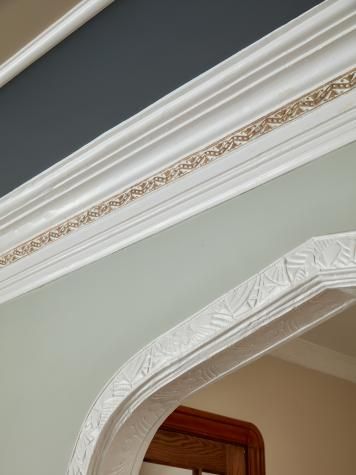
Installing new trim that matches what’s in an old house is tricky. So ask your contractor to carefully remove the existing moldings at the start of the project, and re-use them for your new bathroom. You will likely have enough if you are keeping the same layout. If, on the other hand, you are expanding the space or adding doors or windows, you can take a sample of the old molding to a lumberyard and try to find a close match, or custom-order trim that perfectly matches the rest of your home.
Keep Fixtures in Place and Save on Labor

If you’re installing a new upstairs bathroom—or need to replace the main drainpipe down to the basement in an existing bathroom—consider using cast iron instead of the standard PVC plastic. This might seem old-fashioned, but cast iron is much quieter so you won’t hear every flush of water whoosh by when you’re sitting in whatever room is under the bathroom.
Note that changing the location of plumbing fixtures is one of the most expensive aspects of redoing a bathroom, since this work must be done by a licensed plumber. If you put the new sink, toilet, shower, and tub back where the old ones were, you won’t have to run new supply and drain connections to those locations, potentially saving you thousands on the cost of your bathroom renovation.
Budget Guidelines for a Major Bathroom Remodel
Sometimes nothing short of a major, down-to-the-studs remodel will give you the space you need or the zen-like sanctuary you desire. But if you’re looking for payback at resale, check out our guidelines for the maximum budget you should allot to ensure a solid return on your investment.
Need Help Financing Your Remodel?
You’ll need to set a realistic budget for your bathroom redo—and stick to it. And if you need extra cash to finance your kitchen redo, a personal loan from Discover is a quick and simple option. Preview your interest rate and choose how much you need to invest in your home’s long-term value. Checking your rate will not affect your credit score.
Fixed Rates | Quick Funds | Flexible Terms
Check Your Rate
Our Conclusion
Whether your goal is luxury and functionality, a bathroom remodel can improve your living space and increase the value of your home. Make sure to plan your budget carefully—we recommend including at least 20% padding in case of overages—and choose a remodeling scope and strategy that fits that budget. Planning in advance can often help keep costs down, though you need to prepare for the unexpected as well. If you could use a little help, discuss your ideas with a bathroom remodeling contractor to find out what’s possible.
